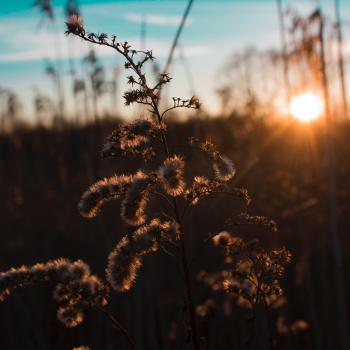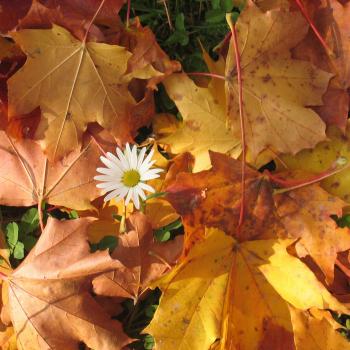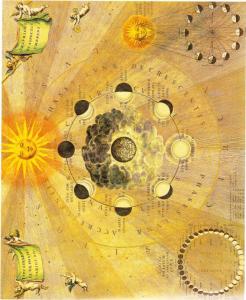 Today, Monday August 21, 2017 the Great American Eclipse occurs when the moon’s shadow falls on soil from the West Coast to the East Coast. During this solar eclipse, the moon passes between the earth and the sun. The totality will occur within a 70 mile band from Oregon to South Carolina and will last for two minutes forty seconds in any location along that band.
Today, Monday August 21, 2017 the Great American Eclipse occurs when the moon’s shadow falls on soil from the West Coast to the East Coast. During this solar eclipse, the moon passes between the earth and the sun. The totality will occur within a 70 mile band from Oregon to South Carolina and will last for two minutes forty seconds in any location along that band.
Much has been published about this event and many of us, depending on when you are reading this column, will see or have seen or felt it. For more on the nature of eclipses see my earlier column at:
Eclipses, Spring Equinox and Ocean Tides – March 2016
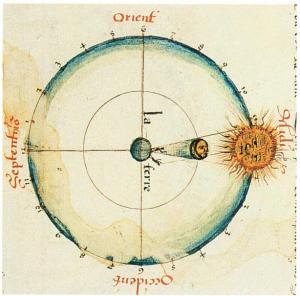 Some say this is a defining moment. Because of its totality and its passage over states from coast to coast, this event has special significance. In the past, eclipses were often said to be ominous but modern interpretations emphasize the opposite. In these, solar eclipses, which are new moons that are intensified, offer the possibility of new awakenings and reinvigorated beginnings, a time to value our uniqueness. Rather than judging ourselves or others by physical characteristics, this moment calls on us to be guided by the wisdom in our hearts, rather than family and cultural dictates.
Some say this is a defining moment. Because of its totality and its passage over states from coast to coast, this event has special significance. In the past, eclipses were often said to be ominous but modern interpretations emphasize the opposite. In these, solar eclipses, which are new moons that are intensified, offer the possibility of new awakenings and reinvigorated beginnings, a time to value our uniqueness. Rather than judging ourselves or others by physical characteristics, this moment calls on us to be guided by the wisdom in our hearts, rather than family and cultural dictates.
Multiculturalism shapes the American Character
This eclipse invites us to reassess where we are and what we should do next to move toward a just and loving society that values compassion and encourages joy and personal enrichment for all. Sounds a bit naïve, perhaps? The childlike spirit can be quite instructive at this crossroads.
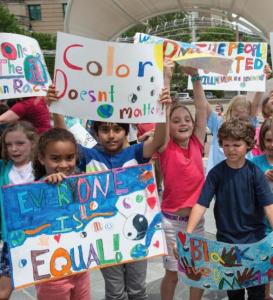 This picture of children in Asheville, North Carolina, participating in a rally against racism in 2016, is both healing and edifying. It is time we openly and proudly honor the multicultural contributions to American culture. Rather than a melting pot, we can see ourselves as a tossed salad. Instead of denying our folklore we can reclaim and celebrate our artistic expressions. This will be a way of bridging divides that economic and political debates often has difficulty doing.
This picture of children in Asheville, North Carolina, participating in a rally against racism in 2016, is both healing and edifying. It is time we openly and proudly honor the multicultural contributions to American culture. Rather than a melting pot, we can see ourselves as a tossed salad. Instead of denying our folklore we can reclaim and celebrate our artistic expressions. This will be a way of bridging divides that economic and political debates often has difficulty doing.
We are currently in a struggle for the minds and hearts of Americans and citizens of the world who pay attention to the viewpoints Americans represent. This deliberation, first and foremost, is a matter of vision about exactly what the American Character should be. Many of us, regardless of varied spiritual affiliations, have realized that this is an issue of our core values.
Consider the following advice given by Eleanor Roosevelt in her book, The Moral Basis of Democracy, published in 1940. The earth-based metaphor and the spiritual images resonate with my reverence for humanity as a whole and all life in its diverse forms.
“Somehow or other, human beings must get a feeling that there is in life a spring, a spring which flows for all humanity, perhaps like the old legendary spring from which all could draw eternal youth. This spring must fortify the soul and give people a vital reason for wanting to meet the problems of the world today, and to meet them in a way which will make life more worth living for everyone. It must be a source of social inspiration and faith.”
Several thoughtful columns on this issue have been published recently in Nature’s Path blog. They are well worth reading. The Southern Poverty Law Center has published two very useful booklets. These are highly illustrated, full of personal, inspiring stories. You can see them by clicking SPEAK UP! AND FIGHT HATE.
In depth conversations with people of varied cultural experiences has helped me to appreciate the mix of cultures that make up the United States. It has also challenged stereotypes and called me into adventures that have broadened my perspective. Here are two important lessons I consider essential to my spiritual outlook.
Sacred and Secular
When developing Rise Up and Call Her Name: A Woman-honoring Journey into Global Earth-based Spiritualities I worked closely with two African American Unitarian Universalists, Betty Reid Soskin and Rev. Toni Vincent. I want to share a nugget of wisdom from each that has guided me and enriched my own understanding.
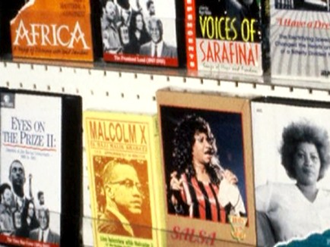 For many years Betty Reid Soskin operated a shop in Berkeley California that serviced the religious needs of the African American community as well as provided secular educational material about African and African American historical and cultural topics.
For many years Betty Reid Soskin operated a shop in Berkeley California that serviced the religious needs of the African American community as well as provided secular educational material about African and African American historical and cultural topics.
I undertook my own study of this wealth of information about the rich cultural heritage African Americans have created. Learning about the depth and breadth of the African American contribution to America, in its many diverse forms, is something most Caucasian Americans would really benefit from and I believe find enriching. Too often it is missing in our curricula and our personal journeys. A visit to the National Museum of African American History and Culture which opened in September 2016 in Washington D.C. is on my wish list.
Betty feels that one of the most important elements of African American spirituality is the concept that “the Sacred and the Secular are one.” She has been active in civil rights and community action projects all her life and sees these as central to her religious life. Now ninety-five years old, she never stops growing. In a previous column, I also wrote about Betty’s adventure as the oldest National Park ranger, Joy: The Persistent Ally (Betty Soskin) – December 2015 (See her biographical note at the end of this column.)
Improvisation
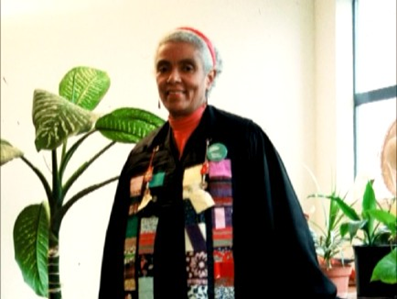 Reverend Toni Vincent, Unitarian Universalist minister, sees the influence of the philosophy and worldview from Africa in Afro-traditional quilting.
Reverend Toni Vincent, Unitarian Universalist minister, sees the influence of the philosophy and worldview from Africa in Afro-traditional quilting.
Inspired by African American quilt making, Toni and a group of women in her congregation created her celebratory stole using the African American quilting method. African traditional quilting does not use measured pieces as more well-known quilting methods demand. Instead quilters work with “models in their minds,” enjoying the variations their quilts exhibit. Quilters use irregular colors, shapes and sizes which personalize a piece and create unique statements. The imprecisely matched patterns are intentional, creating a feeling of improvisational movement.
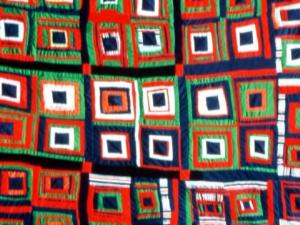 The improvisation in these quilts is very similar to the improvisation used in African American music. Quilters talk about their work as “playing the fabric.” The correlation of quilt making to rhythmic phrasing in black music is well known in the Afro Atlantic world.
The improvisation in these quilts is very similar to the improvisation used in African American music. Quilters talk about their work as “playing the fabric.” The correlation of quilt making to rhythmic phrasing in black music is well known in the Afro Atlantic world.
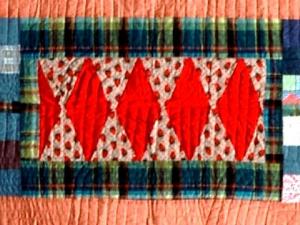 African American quilts display an “inner design sense” which is also one of the organizing principles of music and dance. This inner design sense in music is the ability to hear two different kinds of beats at once and is also common to West Africa where earth-based and pantheistic religions are practiced.
African American quilts display an “inner design sense” which is also one of the organizing principles of music and dance. This inner design sense in music is the ability to hear two different kinds of beats at once and is also common to West Africa where earth-based and pantheistic religions are practiced.
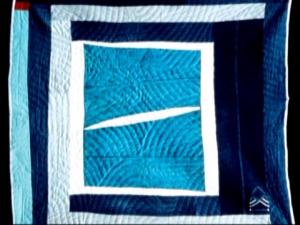 Robert Farris Thompson, professor of African and African American History of Art at Yale University comments in Rise Up: “A Congo traditionalist remarked to me: every time there is a break in pattern — that is the rebirth of ancestral power within you. Shifts from light to dark can symbolize passing through two worlds — the quest for insight and the power of the ancestors. I stopped to consider how many of the finest quilters in Black America are devout churchgoers, believers in the Spirit. Then, I regard their shimmering shifts of form, size and color spread out upon their children’s beds and I wonder… The linked African and African American religious expression may constitute the strongest spiritual force going on the planet.”
Robert Farris Thompson, professor of African and African American History of Art at Yale University comments in Rise Up: “A Congo traditionalist remarked to me: every time there is a break in pattern — that is the rebirth of ancestral power within you. Shifts from light to dark can symbolize passing through two worlds — the quest for insight and the power of the ancestors. I stopped to consider how many of the finest quilters in Black America are devout churchgoers, believers in the Spirit. Then, I regard their shimmering shifts of form, size and color spread out upon their children’s beds and I wonder… The linked African and African American religious expression may constitute the strongest spiritual force going on the planet.”
May we all make use of improvisation and continuing conversations to find ways to speak out and counter racial, gender and socio-economic animosities in favor of common emotional viewpoints that value social justice that is inclusive, culturally sensitive, compassionate and kind.
Elizabeth Fisher is the creator and producer of the Rise Up and Call Her Name DVD which contains more information on this quilting method and many other multicultural traditions. It can be purchased at: http://www.uuwr.org/new-store/curricula. Also see her website at www.RiseUpAndCallHerName.com.
Art credits:
The cycle of lunar phases, determined by the relative positions of the Earth, Moon, and Sun, is depicted in this 17th-century atlas compiled by Andreas Cellarius, the Harmonia Macrocosmica. From Glorious Eclipses, Their Past, Present and Future, appears here for educational purposes.
From a 16th-century navigation manual by Jacques de Vaux containing astronomical instructions for the use of sailors. Here, the phenomenon of solar eclipses is explained, based on the geocentric system. From Glorious Eclipses, Their Past, Present and Future, appears here for educational purposes.
Picture of children courtesy of Southern Poverty Law Center
Videos in Betty Reid Soskin’s store, photo by Bob Fisher
Portrait of Rev. Toni Vincent, photo by Bob Fisher
“Pig in the Pen,” quilt by Maple Swift, 1990, courtesy of Eli Leon appearing in Rise Up and Call Her Name video
American Medallion Quilt” by Tina Woods, 1985, courtesy of Eli Leon appearing in Rise Up and Call Her Name video
Singdinger,” quilt by Arbie Williams, 1991, courtesy of Eli Leon appearing in Rise Up and Call Her Name video
Biographical notes:
Betty Reid Soskin, was an active Unitarian Universalist in several congregations in the San Francisco Bay Area and has served as a member of the Board of Trustees of Starr King School for the Ministry. She also served on the Board of the Unitarian Universalist Black Caucus during the 1960s. She has lived a long and varied life with multiple careers in political organizing and community service. She is currently the oldest National Park Ranger in America, still working at ninety-five and highly sought after for her speaking and writing abilities. See her blog http://cbreaux.blogspot.com/ for her wit and wisdom. She has been writing this blog since 2003.
Reverend Toni Vincent describes herself as a disenfranchised political activist who struggled to survive the Reagan era who felt “burned-out” after eleven years of working with women and children in crisis at the Berkeley YWCA’s Women’s Refuge. She left her position as Executive Director of the Berkeley Community YWCA in 1985 to pursue Unitarian Universalist ministry as another path to community service. She suggested and helped to develop the Afro-traditional quilting segment of Session 5 of Rise Up & Call her Name which she feels conveys many of the essential components of African American Spirituality.









